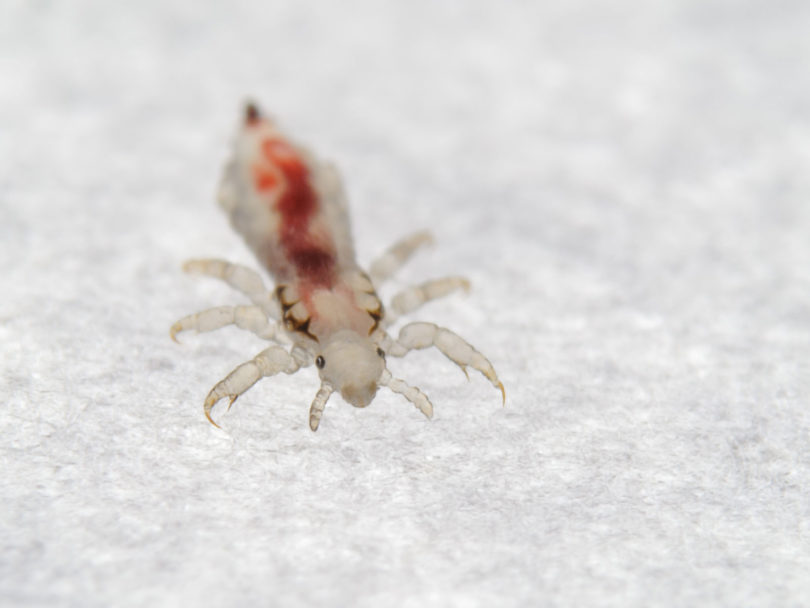They’re not a sign of illness, poor hygiene or a dirty house. They don’t prefer long hair to short. They can’t fly, jump or spread disease. In fact, they’re not as contagious as most people think.
Head lice can be a source of major misery, of course — but they don’t need to be a source of panic, according to local doctors and the American Academy of Pediatrics.
Lice are tiny, wingless insects that feed on human blood. They can cause intense itching, irritability and redness or a rash on skin of the scalp, ears, neck and shoulders, which can become infected with scratching. Since lice tend to be more active at night, they also can disrupt sleep.
Cases are most common in preschool and elementary school-aged children, with an estimated 6 to 12 million infestations each year nationwide, according to the Centers for Disease Control and Prevention.
Spotting live lice and their eggs, called nits, actually can be harder than it sounds, as they can resemble dandruff or residue from shampoo or hair spray, says Dr. Kristina Powell, a pediatrician with Children’s Hospital of the King’s Daughters in Norfolk, Va. However, they’re much stickier and can only hatch near the skin, where it is warm.
“Nits are cemented firmly to the hair shaft and are difficult to dislodge,” says Powell, who practices at Pediatric Associates of Williamsburg. “Active infestation is suggested by the finding of many nits within one-quarter inch of the scalp.” Lice are most visible under dim light, and parents also can buy a fine-toothed nit comb at a drugstore to search, Powell adds.
Parents who suspect lice should immediately see a family doctor or school nurse for a diagnosis and individualized treatment plan.
Here are five tips to help ease any angst:
- Lice don’t spread all that easily. The bugs can only move by crawling, and they can only survive off a human scalp for about 48 hours. Therefore, most new cases happen through direct contact with an infected person’s hair, rather than by sharing of hats, clothing, hairbrushes, pillows or furniture. In fact, doctors typically don’t treat other household members preventatively unless they’ve used the same bedding; they recommend monitoring for symptoms instead. Pets also can’t spread lice.
- Infested children may not need to miss school. While local policies vary, the CDC and AAP simply call for kids to undergo prompt treatment and avoid direct head contact with others. Lice aren’t dangerous and often have been present long before symptoms appear. “Itching occurs as an allergic reaction to saliva injected during feeding, and the onset may be delayed until sensitization occurs after four to six weeks,” notes Dr. Amira Elhassan, a family physician with Bon Secours Town Center Medical Associates in Virginia Beach. The AAP calls no-nit school rules “unjust” — especially as more lice cases occur after sleepovers, camps and sporting events — and encourages its members to educate local communities.
- Treating lice isn’t fun, but you have options. Parents can try multiple prescription or over-the-counter topical treatments, which may require two or three applications. Systematically combing nits from wet hair, followed by use of a high-heat hairdryer, is another option (there even are companies that offer in-home services for the busy or squeamish). As for home remedies that aim to smother or repel lice by spreading tea tree or coconut oil, mayonnaise, petroleum, apple cider vinegar or Listerine on the scalp — often followed by wearing a shower cap for several hours or overnight — there’s no good data on efficacy or safety, so check with a doctor first. The same goes for “prevention” shampoos such as Fairy Tales. “It may work, but there’s no scientific evidence it will,” Elhassan cautions.
- You don’t need to go totally nuts cleaning your home. The most important step is to wash bedding, clothing, towels and hair equipment that came in contact with an infected person in the two days before treatment, using hot water and a high-heat dryer cycle. If you can’t wash an item, such as a hairbrush or stuffed animal, store it in a sealed plastic bag for two weeks. You can also vacuum furniture and carpets, although transmission risk from those sites is low. Insecticide sprays and fogs are unnecessary and can be toxic if inhaled or absorbed through the skin.
- Try not to feel ashamed. Lice happen — regardless of parenting skill, season, income level or any other factor. Don’t feel guilty if you didn’t immediately realize your child was affected. Don’t blame yourself if a case returns; the cause may simply be resistance to a certain medication. In general, your best move is to screen children about once a week and notify schools or other community groups of a problem. As the AAP policy puts it: “It’s important to remember that head lice is a nuisance, not a serious disease.”
Tips for Preventing the Spread of Head Lice in Schools
Head lice are transmitted through close person-to-person contact. Head lice cannot fly, but only crawl and can sometimes be transmitted through sharing personal belongings like brushes, combs, helmets and hats.
- Desks should be spaced apart so children are not sitting shoulder to shoulder.
- Children with long hair should be encouraged to tie it back.
- Have separate pegs for coats and hats. Children shouldn’t hang coats and hats on top of those of other children or pile them on top of each other.
- Ensure ample space between children in lines or when working together as groups.
- Minimize shared use of headgear such as earphones, helmets and clothing (such as concert costumes). Hand-vacuum these items between users.
- Make sure that the health curriculum of all pupils contains information about head lice and how they are identified, transferred and treated.
Source: The Head Lice Center


